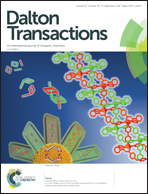Plant extracts as green reductants for the synthesis of silver nanoparticles: lessons from chemical synthesis
Abstract
The increasing use of silver (Ag) nanoparticles (NPs) in daily-life applications, electronics, or catalysis calls for green and cost-efficient synthetic methods. Ag NPs are used especially in biomedicine because of their antibacterial, antifungal, or anticancer properties. Chemical synthesis allows tuning the particle morphology, size, and crystallinity, but requires toxic and hazardous chemicals. Bioinspired synthetic protocols have shown promise to minimize environmental impact, but biological protocols for the synthesis of Ag NPs lack control on the morphology and crystallinity. This review briefly compiles the chemical synthesis of Ag NPs and contrasts it with “green” protocols based on lessons learnt from chemical synthesis. The synthesis of Ag NPs with different plant extracts and the associated phytomolecules, their chemical and biological effects, and their effect on particle synthesis are described and put into perspective to improve green protocols. The surface functionalization of Ag NPs by phytomolecules and the mechanisms of their biomedical applications are summarized.

- This article is part of the themed collection: 2018 Frontier and Perspective articles


 Please wait while we load your content...
Please wait while we load your content...